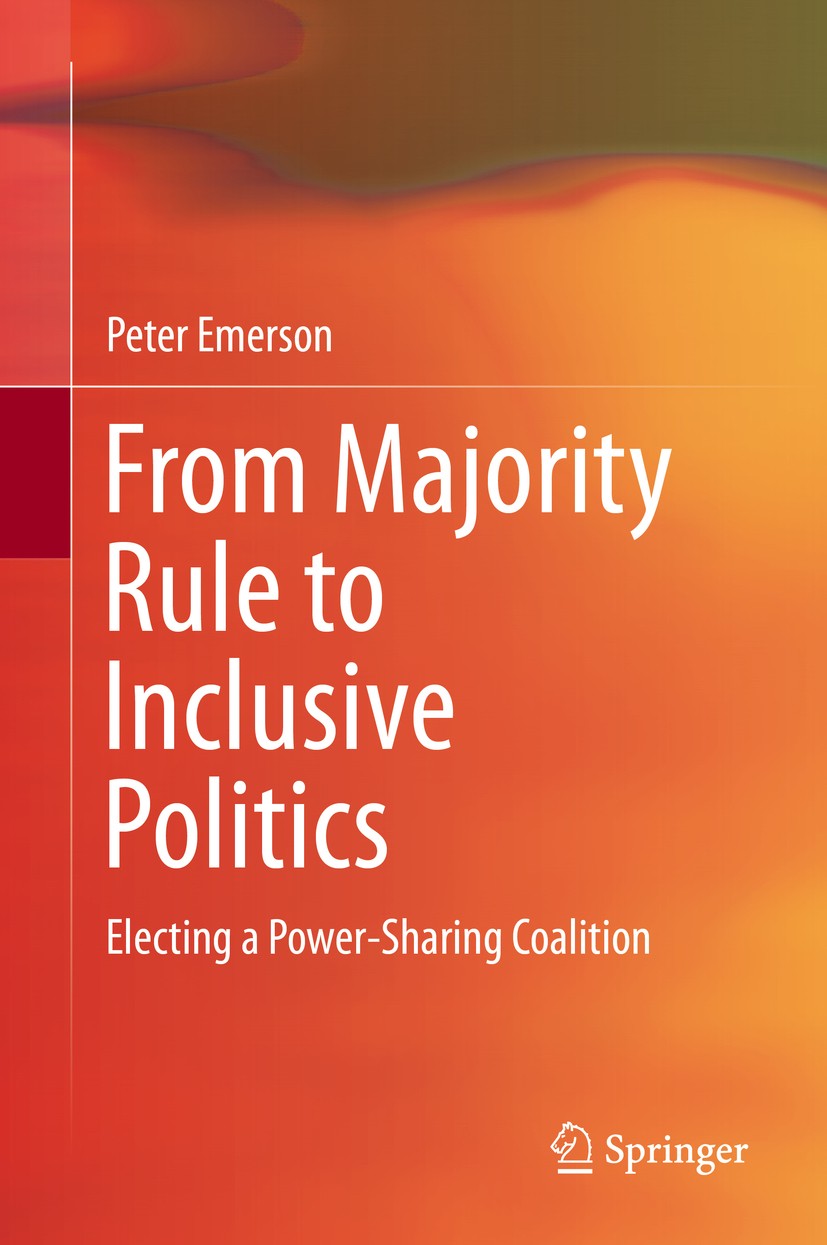| 书目名称 | From Majority Rule to Inclusive Politics | | 编辑 | Peter Emerson | | 视频video | http://file.papertrans.cn/349/348775/348775.mp4 | | 概述 | Offers a complete guide on electing majority or all-party, power-sharing coalitions.Gives examples, clearly depicted in tables, to illustrate the different voting procedures.Shows how to achieve conse | | 图书封面 |  | | 描述 | .This book discusses voting procedures in collective decision-making. Drawing on well-established election processes from all over the world, the author presents a voting procedure that allows for the speedy but fair election of a proportional, all-party coalition. The methodology - a matrix vote - is accurate, robust and ethno-color blind. In the vote, the counting procedure encourages all concerned to cross the gender as well as any party and/or sectarian divides. While in the resulting executive each party will be represented fairly and, at best, with the consensus of parliament, every minister will be the one most suited to his/her new portfolio. By using preferential voting and thus achieving consensus, the matrix vote will be fundamental to the resolution of conflicts..The matrix vote can also be used when:.• two or more parliamentary parties elect a coalition government.• one parliamentary party elects a government or shadow cabinet, or organizations in civil society elect their governing boards or executive committees.• any group chooses a fixed number of individuals to form a team in which each member carries out a different function. | | 出版日期 | Book 2016 | | 关键词 | Collective Decision-Making; Conflict Resolution; Matrix Vote; Peace-Making; Power-Sharing; Preferential V | | 版次 | 1 | | doi | https://doi.org/10.1007/978-3-319-23500-4 | | isbn_softcover | 978-3-319-79493-8 | | isbn_ebook | 978-3-319-23500-4 | | copyright | Springer International Publishing Switzerland 2016 |
The information of publication is updating

|
|
 |Archiver|手机版|小黑屋|
派博传思国际
( 京公网安备110108008328)
GMT+8, 2025-11-14 00:30
|Archiver|手机版|小黑屋|
派博传思国际
( 京公网安备110108008328)
GMT+8, 2025-11-14 00:30


